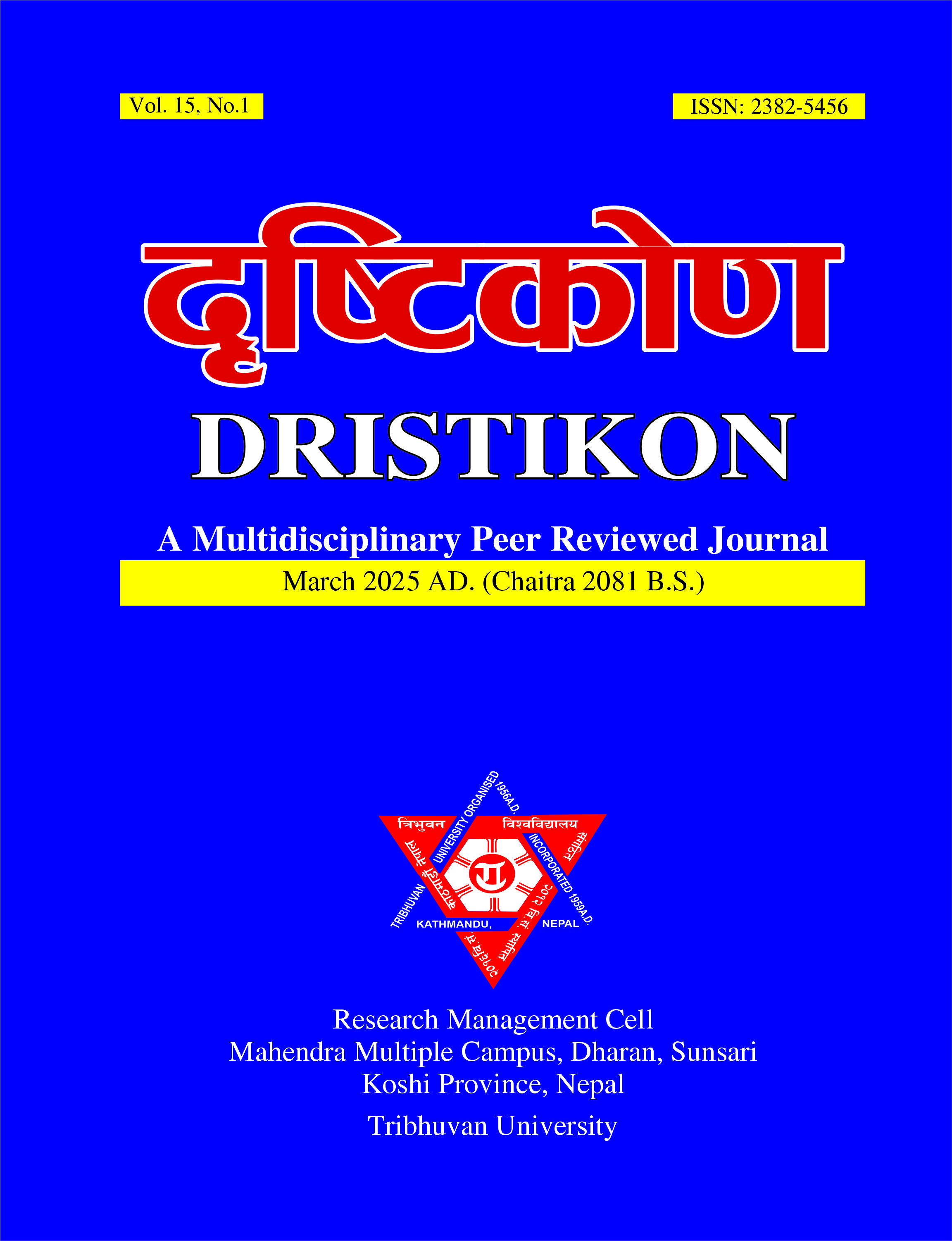Integrating AI in English Language Teaching: Challenges and Opportunities
DOI:
https://doi.org/10.3126/dristikon.v15i1.77118Keywords:
artificial intelligence, english language teaching, ai integration, challenges, opportunitiesAbstract
Artificial Intelligence (AI) is now popularly turning the trends in English Language Teaching (ELT) to approaches and methods which will make learning personal and teaching easy and effective. This study addresses the involvement of AI in ELT and some of the many opportunities and challenges that it opens up for teachers and learners. In this study, a qualitative research approach has been adopted to explore the lived experiences and perceptions of university-level English teachers regarding AI integration in ELT. The data were analyzed thematically to discover challenges and opportunities related to AI incorporation in ELT using semi-structured interview procedures with six teachers from different campuses of the Sunsari district. AI-powered tools, such as chatbots, virtual tutors, and automated grading systems, increase personalized learning experiences; help restructure administrative work, while giving real-time feedback; and build dynamic learning environments with diversified linguistic needs for learners. Besides, AI integration suffers some constraints, including inadequate technological infrastructure, improper teacher training, ethical dilemmas, and digital inequity in terms of under-resourced; but otherwise, privileged communities. AI in the ELT scene is still immature in Nepal; it is largely limited in urban areas. Research requires such AI involvement to nourish educational gaps, offer worldwide resources, and endorse content-specific and individualized learning experiences. Finally, this article advocates the balanced co-usage of human intelligence with the aid of AI advancements to revolutionize ELT within ethical, infrastructural, and cultural challenges in creating an effective and inclusive learning ecosystem.
Downloads
Downloads
Published
How to Cite
Issue
Section
License
© Research Management Cell, Mahendra Multiple Campus, Dharan

